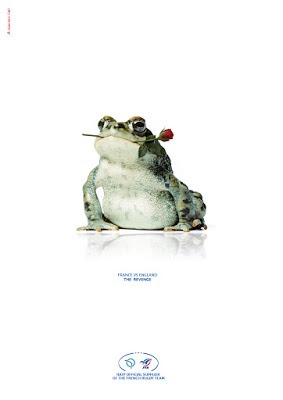This newsletter was originally published via email on the 1st May 2016. You can also sign up to receive Ice Cream Sundae with the form on the right-hand side column or here (The newsletter format shifted from long to shorter form since).

Sometimes the date is helpful to avoid spending that much time wondering what I should be writing about. Easter was the last seasonal event I wrote about and I’m gladly going with the easy route here making this Sundae about May Day.
About help, I just found out the Mayday distress signal used mainly by aviators and mariners come from the French “m’aidez” Short for “venez m’aider” (Come and help me). A radio officer in London Croydon Airport invented the procedure in 1923. Much of the air traffic was between London and Paris at the time, so they wanted to make sure they came up with something everybody could easily understand. When used, the signal is to be repeated three times to make sure it isn’t mistaken for another similar sounding word.
May 1st is a public holiday in many countries, including the UK. When I moved to London I remember asking colleagues what the May Day Bank Holiday was celebrating and none of them knew. The consensus seemed to be that I should be happy it’s a public holiday and enjoy it without asking so many questions.
One of my all time favourite operas, Mozart’s The Marriage of Figaro, was performed for the very first time in Vienna on May 1st 1786.
The beautiful overture is an excellent excuse to provide a musical theme while you’re reading this. I’m listening to the whole opera while writing this.
May Day is an ancient spring festival celebrated in many European countries, rooted in pagan traditions. It apparently comes from Floralia, the Roman spring festival in honour of Flora, Goddess of flowers. In Latin, it was called “Ludi Florae” The Games of Flora. You probably know by now that I like games so that got my attention. The Roman festival celebrated flowers and fertility in a pleasure and fun seeking atmosphere. The Games were organised for the people of Rome, and remaining texts from that time tell us the entertainment in 68 AD featured a tightrope-walking elephant. In case you’re wondering what that looks like, here’s a video of an elephant walking a tightrope in a Thai zoo. I’m not sure what they have to do to train the elephant or if it’s a good thing for the animal altogether.
As mentioned, flowers are an important part of the celebrations. In France, it’s traditional to buy and gift a few strands of “muguet”, lily of the valley. Legend says giving the small white bell shaped flowers goes back to the 16th century. French king Charles IX was visiting the South of France with his mother Catherine de Medici in 1560, their host Chevalier Louis de Girard de Maisonforte gave the young king the flowers from his garden for good luck. The king appreciated the gesture and decided to make it a recurring event. He would give ladies of the court lily of the valley every spring. The tradition quickly extended to the whole country and is alive and well to this day. There’s a folk song about it too.
A slightly mysterious recurring tradition of May Day celebrations is the Maypole erected in the centre of the festival.
Typically a wooden pole, sometimes decorated with greenery, flowers and ribbons tied to it. It is primarily found in Germanic countries, and people dance around the maypole during the spring festivities. We know the origins of the practice are old, dating from days of Germanic paganism of the Iron Age (Which includes Norse religions and more).
Unfortunately the exact significance of the maypole was lost on the way, even though the tradition remains. Folklorists continuously debate the meaning of the maypole. Some believe there is a relation with the Norse cosmological tree connecting the nine worlds, Yggdrasil. Others think it is a symbol of the world axis. Some ideas are also related to the pole as a phallic symbol and related to the idea of fertility associated with spring celebrations. Unsurprisingly people like Sigmund Freud supported these ideas.
As far as I know it is the rare seasonal holiday that doesn’t boast much by way of promotional marketing stuff. Some stores have sales going on but advertising symbols don’t immediately come to mind as they do for Easter or Christmas – speaking for myself in any case.
I wonder what the promotions or advertised products and services could look like for May Day.
Pizza Hut spring flower topping special? KFC Zinger spring chicken combo? How about a Durex branded maypole? That might be a step too far. To keep this on safer grounds, McDonalds could make up a May Day Menu featuring a spring onion burger.
These may or may not sound like fun. If I were to devise a marketing and brand strategy, I would start by identifying and specifying the challenge to solve or opportunity to take advantage of. Until this is clearly established there is no particular frame of reference to evaluate whether spending your marketing budget on sponsoring a series of May Day village fetes may or may not be a better idea than organising a competition for a lucky customer to win a dream summer holiday.
In a similar fashion to the kind of freedom the School of Communications Arts 2.0 students I’ve been recently mentoring have, May Day is an open brief here so I can make up whatever I want as long as it sounds plausible.
I could choose a specific brand and think about the marketing activities they could run at this time of year. As strange as it may sound, in this case it sounds like more fun to imagine for a moment I’m in charge of the brand called May Day. My next steps would be to ask many questions, such as: What are the values and attributes of this brand? What does May Day represent for people?
I was also reminded May Day is a James Bond villain’s henchwoman in A View to a Kill, the 1985 film starring Roger Moore, Christopher Walken as the villain Max Zorin who wants to destroy the Silicon Valley. Grace Jones plays May Day, Zorin’s lover and chief henchwoman, apparently ridiculous strong. While an interesting anecdote, it’s unlikely to be the first thing that comes to mind when thinking of May Day as a brand. We can probably safely remove it from the equation.
As stated earlier on, May Day is about springtime. It’s about the revival of life after sleepy winter. It’s about days getting longer, the sun getting slightly warmer, bright colours, flowers and fertility. I could keep writing more concepts and in a professional setting I probably would because there is interesting meaning to consider tied to all these ideas. This is an enjoyable part of my job that brings us into the territory of semiotics, that is the study of meaning-making, sign processes and meaningful communication.
The main message of May Day as a brand could be something like: “spring in full swing.”
The mood is merry, chipper.
The function is to celebrate life.
The action involves dancing.
The effect is infectious fun.
The result is fertility, the creation of new life.
If we were designing a logo and branded materials, we’d likely choose green as a dominant colour.
This would be the start of defining the May Day brand. If we pursued this into strategic territories, we might consider the place of that event in the yearly calendar and how it differs or resembles other holidays like Christmas or Halloween. This is only one of the many aspects we could research to further develop this as a brand strategy.
While I’ve occasionally heard people tell me this kind of branding exercise is a lot of hot air (and admittedly in some cases I agree with them), when taken seriously and done well the brand strategy can and should form a strong foundation for any business. This can meaningfully inform all the business activities from product design, distribution, human resources, internal communications, marketing communications or customer service.
Possibly and ironically jarring with all this branding and marketing jargon, May 1st is also the International Worker’s Day.
It’s a celebration of working classes and labourers promoted by international labour movements, socialists, communists and anarchists. The date was chosen in 1889 by newly formed Second International in Paris.
The date was chosen to commemorate the Haymarket Affair, the aftermath of a bombing that took place during a labour demonstration on May 4th 1886 in Chicago. What started as a peaceful rally of workers striking and demanding eight-hour working days turned ugly when someone threw a dynamite bomb at the police. Seven officers and at least four civilians were killed, and many more wounded. May Day has become focal point for demonstrations by various worker’s unions, socialist, communist and anarchist groups.
When I lived in Perpignan last year, the building of the largest union in France, la CGT (General Confederation of Labour), happened to be across the small street from my room. That’s why on May 1st last year loud recording & chanting of The Internationale by a group of unionists suddenly woke me up. That was followed by several speeches reminding me of all the progress acquired by workers over the years, from eight-hour long working days to paid holidays, as well as what was left to struggle about in their view. Speeches were interspersed with partisan and revolutionary song favourites like Motivés, Bella Ciao or La Cucaracha.
This is a whole different direction you could easily go in for a May Day brand strategy, worker’s have been associating meaning to the day for over a century and some parts of the world brand idea associations with worker’s rights and struggles are perhaps stronger than ideas of spring time and fertility.
There is rarely only one best answer to developing a brand strategy. In the meantime, whether you associate today with spring or with worker’s rights, have a fantastic Sunday however you celebrate it.
If you’d like to check out more Ice Cream content, I’ve published a fun conversation with Alexis Kennedy and Cash DeCuir from FailBetter Games who design and develop a fabulous online subterranean Victorian Gothic narrative game called Fallen London. The game is available for free online and now on iPhone application as well if you want to check it out.
If you’ve enjoyed reading this newsletter and know a friend who will too, please forward it on to them.
Till’ next week!
Best,
Willem



